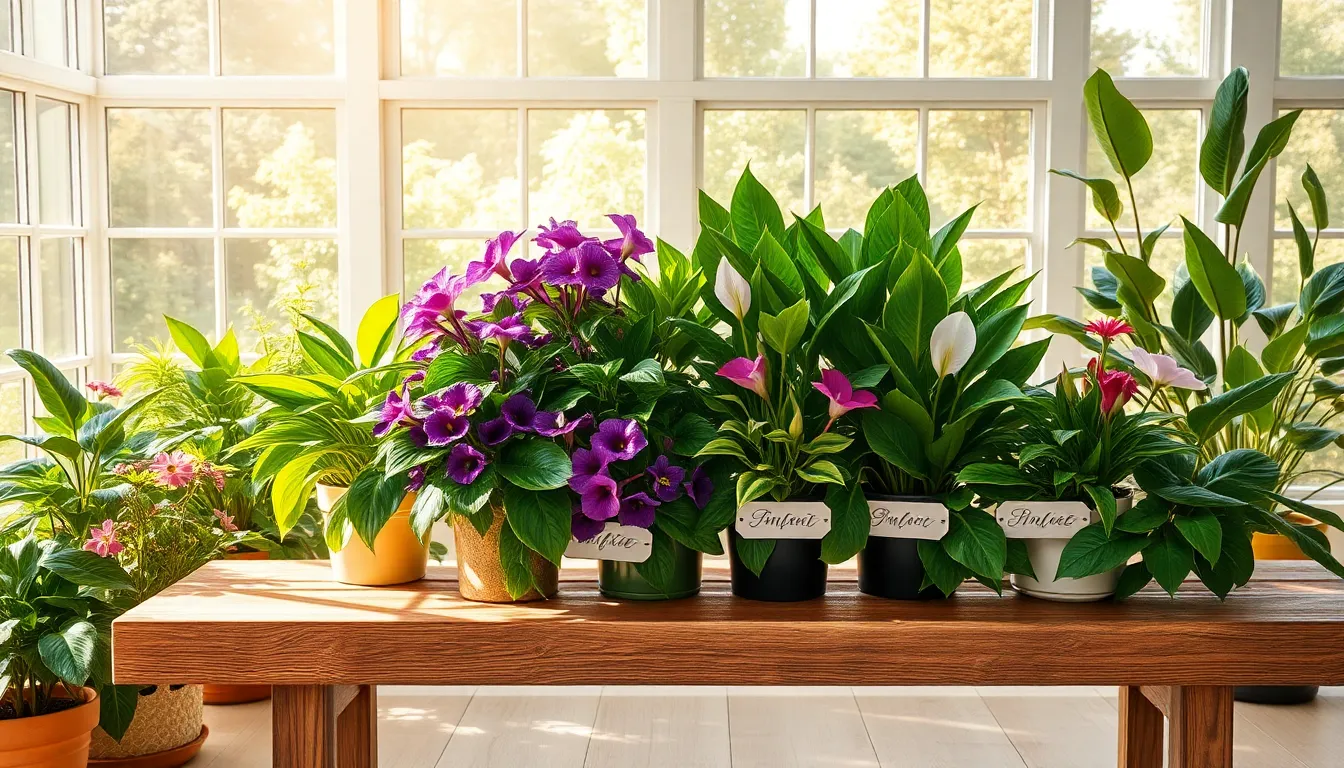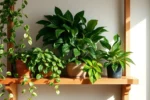Imagine walking into any room of your home and being greeted by a burst of vibrant colors and sweet fragrances; this is the magic flowering houseplants can bring to your indoor spaces. Whether you’re a gardening novice taking your first steps into the world of indoor horticulture or a seasoned green thumb looking to expand your floral repertoire, “Top 10 Flowering Houseplants for Any Room” is here to guide you toward a lush, blooming paradise.
In this guide, we’ve carefully curated a list of indoor plants that are not only stunning but also adaptable to various light and care conditions, making them perfect for any room in your home. You’ll discover practical tips and easy-to-follow techniques that will empower you to cultivate thriving plants, transforming every corner of your living space into a personal oasis.
With each plant on this list, you’ll experience the joy of watching nature’s artistry unfold right before your eyes, while reaping the rewards of cleaner air and a more serene environment. So, roll up your sleeves and get ready to dig into the delightful world of flowering houseplants, confident that success is just a bloom away!
African Violet (Saintpaulia ionantha)
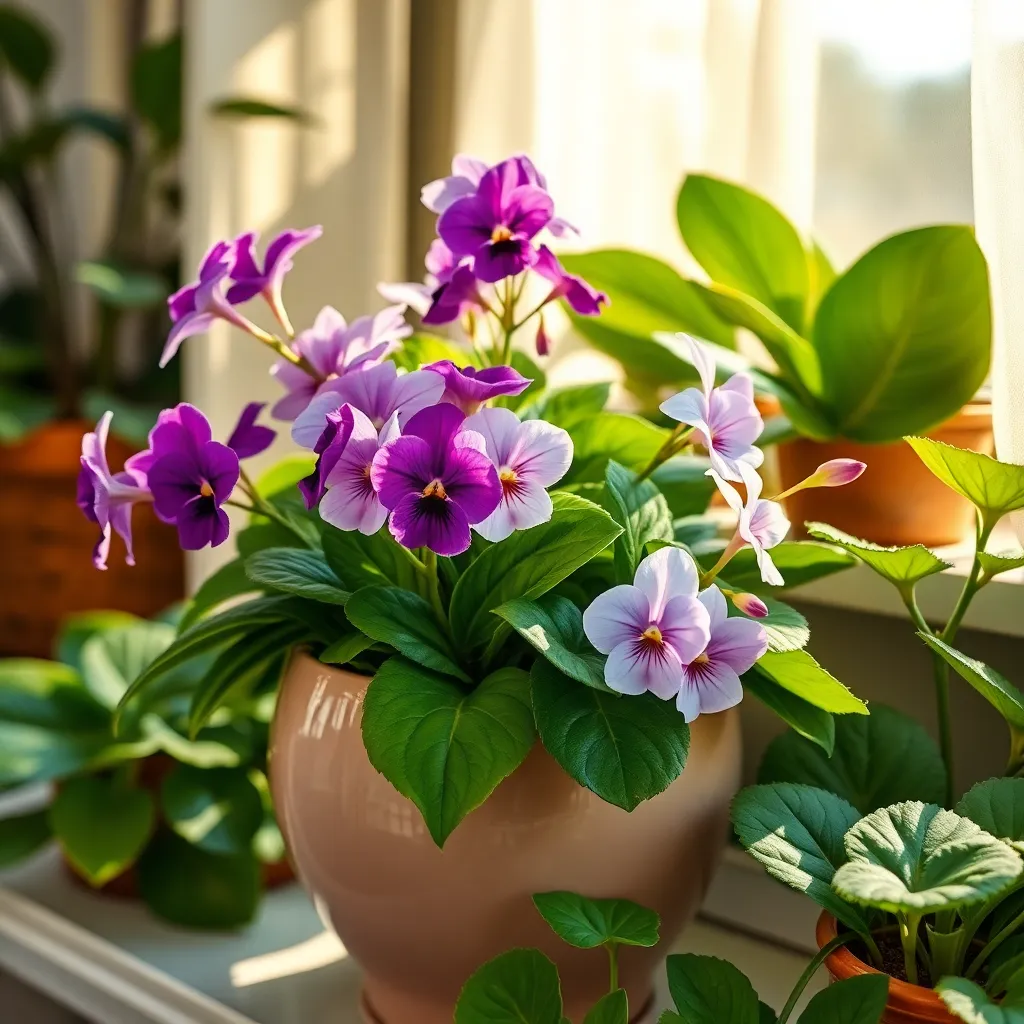
African Violets (Saintpaulia ionantha) are beloved for their vibrant blooms and compact size, making them perfect for any room. They thrive in bright, indirect light, so placing them near an east or north-facing window can result in optimal growth.
To ensure healthy blossoms, water African Violets from the bottom to prevent water from touching the leaves, which can cause spots. It’s best to use lukewarm water, allowing the soil to dry out slightly between waterings to avoid root rot.
African Violets prefer a well-draining soil mix designed specifically for them, often containing peat moss, vermiculite, and perlite. Fertilize them with a balanced, water-soluble fertilizer every four to six weeks to encourage continuous blooming.
For advanced care, consider repotting your African Violet every 6 to 12 months to refresh the soil and provide more room for growth. Grooming your plant by removing spent flowers and yellowing leaves can help direct energy towards new blooms.
Peace Lily (Spathiphyllum spp.)
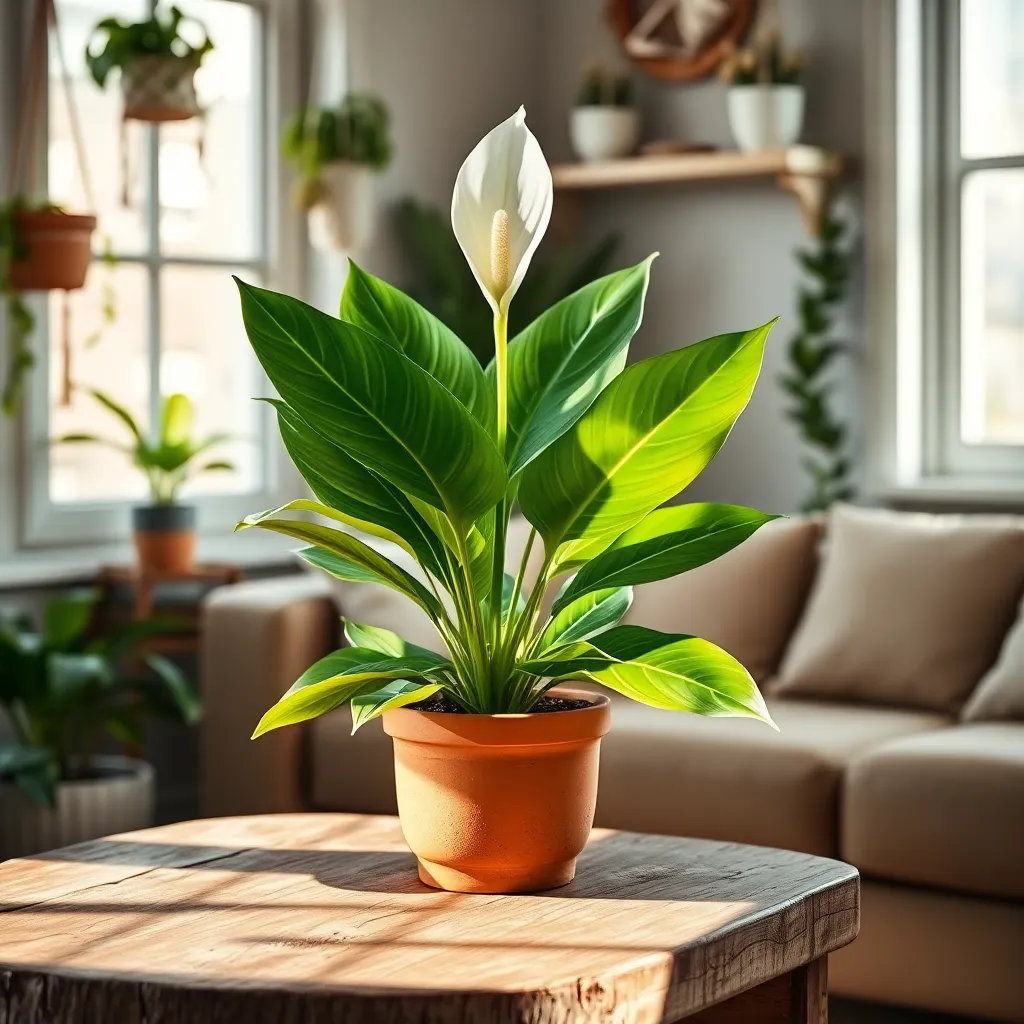
Peace Lilies (Spathiphyllum spp.) are a fantastic addition to any home, known for their lush green leaves and elegant white blooms. They thrive in low to medium light, making them perfect for rooms with indirect sunlight.
To keep your Peace Lily healthy, ensure the soil remains consistently moist but not waterlogged. A well-draining potting mix, such as one containing peat moss and perlite, is ideal for preventing root rot.
Water your Peace Lily when the top inch of soil feels dry, usually once a week, adjusting based on your home’s humidity. During the growing season, feed them monthly with a balanced, water-soluble fertilizer to encourage lush growth.
Advanced gardeners can propagate Peace Lilies by dividing the root ball, ensuring each division has a healthy root system and a few leaves. Be patient, as these plants may take a few weeks to adjust to their new pot before resuming growth.
Orchid (Phalaenopsis spp.)
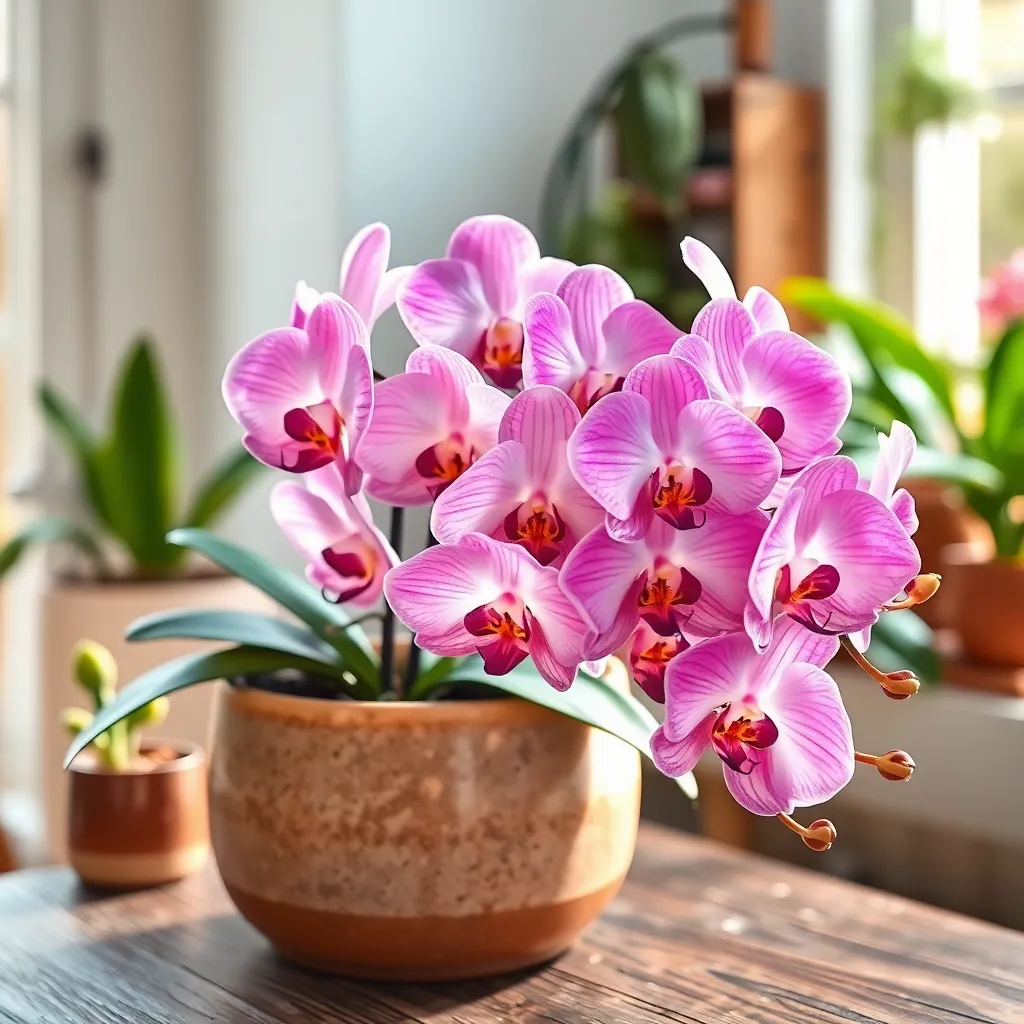
Orchids, particularly the popular Phalaenopsis species, are known for their stunning blooms and can thrive indoors with the right care. These elegant plants require well-draining potting media like a mix of bark and sphagnum moss to prevent root rot.
To ensure healthy growth, place your orchid in a location where it receives indirect sunlight, such as a north or east-facing window. If natural light is insufficient, consider using a grow light to maintain a 12-hour light cycle.
Watering orchids can be tricky; they prefer to dry out slightly between waterings. A good rule of thumb is to water every 7-10 days, but adjust based on your home’s humidity levels and the dryness of the potting mix.
For those looking to encourage blooming, maintain temperatures between 65-75°F (18-24°C) and provide a slight drop in temperature at night. Fertilize your orchid with a balanced orchid fertilizer every two weeks during the growing season, reducing frequency in the fall and winter.
Anthurium (Anthurium andraeanum)
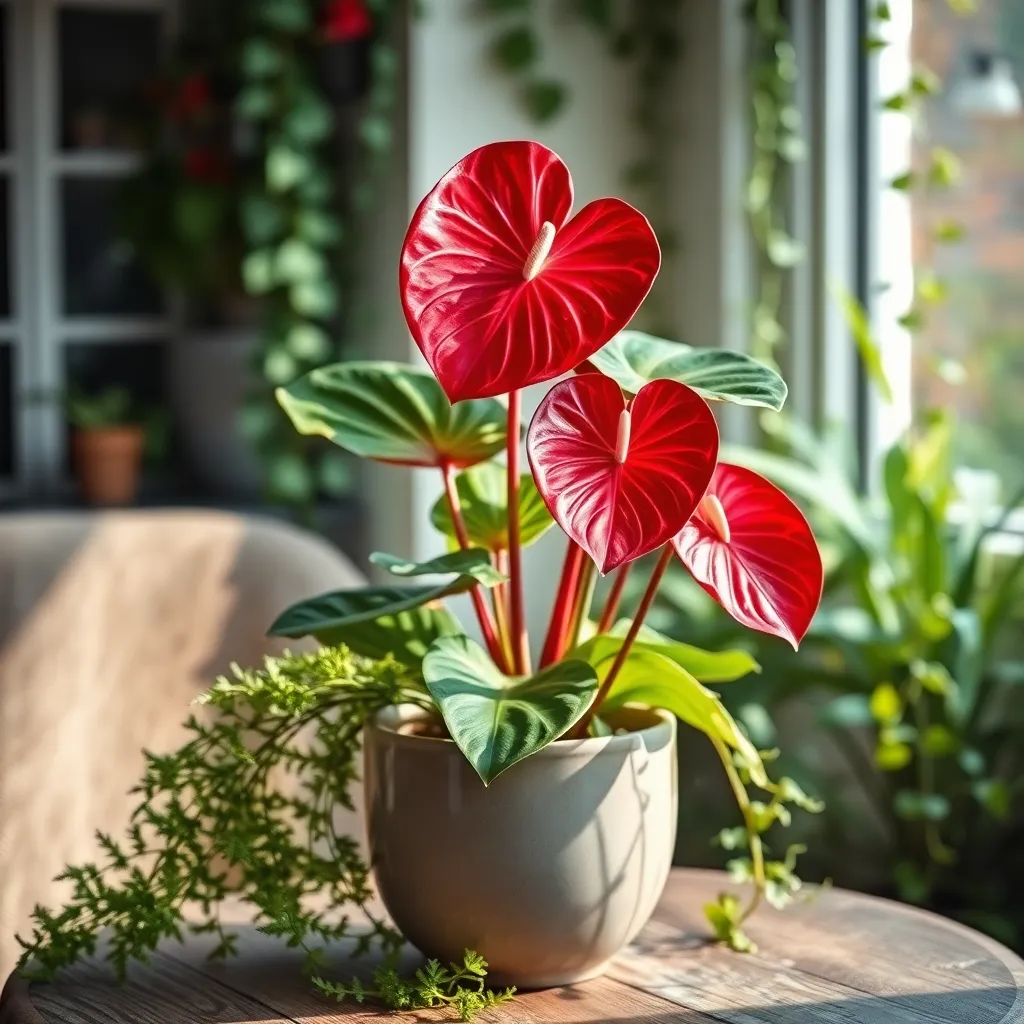
Anthurium (Anthurium andraeanum), known for its glossy heart-shaped leaves and vibrant spathes, adds a touch of exotic elegance to any room. These plants thrive in bright, indirect light, making them perfect for spaces that receive filtered sunlight throughout the day.
To keep your Anthurium healthy, water it when the top inch of soil feels dry, ensuring the pot has good drainage to prevent root rot. Use a well-draining potting mix, such as a blend of peat, pine bark, and perlite, to create the ideal growing environment.
Humidity is crucial for Anthurium, so consider placing it on a tray of pebbles with water or using a humidifier to maintain the moisture levels around the plant. Aim for temperatures between 65-80°F (18-27°C), as this mimics their natural tropical habitat.
Fertilize your Anthurium monthly during the growing season with a balanced liquid fertilizer diluted to half strength. Prune any yellowing leaves to encourage new growth and maintain the plant’s lush appearance.
Bromeliad (Guzmania spp.)
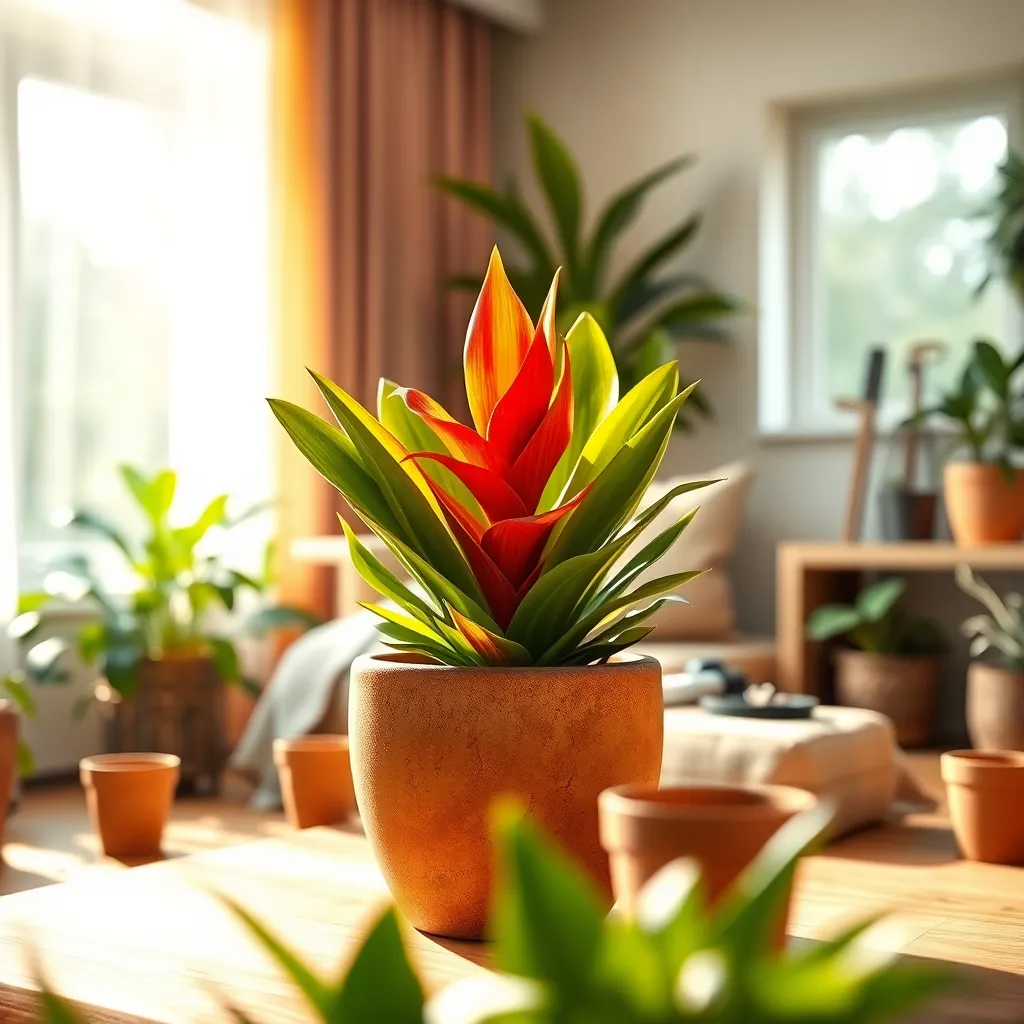
The Guzmania species is a vibrant addition to any plant collection with its striking, long-lasting blooms. These bromeliads thrive in bright, indirect light, making them ideal for rooms that receive a lot of natural sunlight without direct exposure.
For optimal growth, plant Guzmania in a well-draining potting mix, such as a blend designed for orchids. Keep the central cup, or “tank,” of the plant filled with water to mimic its natural habitat and ensure the plant remains hydrated.
Humidity is crucial for Guzmania, so aim to maintain a humid environment by misting the plant regularly or placing a pebble tray with water beneath the pot. Incorporate a balanced liquid fertilizer diluted to half strength into your care routine every month during the growing season to encourage robust blooms.
Advanced gardeners can propagate Guzmania by separating the pups, or offsets, from the mother plant once they’re a few inches tall. Ensure each pup has roots before potting them individually to give them the best chance of thriving. With these care tips, your Guzmania will be a lasting, vibrant presence in your home.
Kalanchoe (Kalanchoe blossfeldiana)
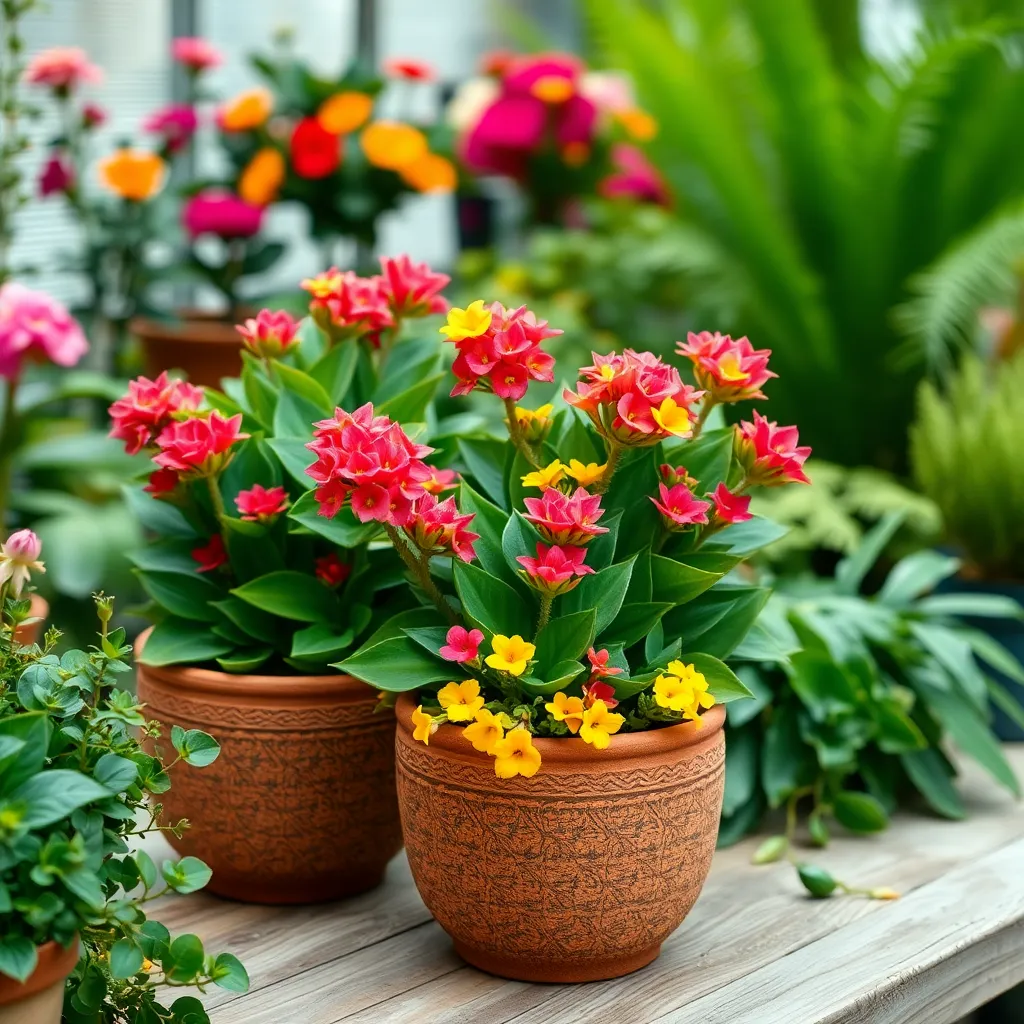
Kalanchoe (Kalanchoe blossfeldiana) is a popular flowering houseplant known for its vibrant blooms and easy-care nature. These plants thrive in bright, indirect sunlight, making them perfect for a sunny windowsill.
To ensure a healthy Kalanchoe, use a well-draining potting mix, such as a cactus or succulent blend. Avoid overwatering; allow the top inch of soil to dry out between waterings to prevent root rot.
For optimal flowering, maintain a consistent temperature between 60-75°F (15-24°C) and avoid placing the plant near cold drafts. Fertilize every month during the growing season with a balanced, water-soluble fertilizer to encourage more blooms.
Advanced gardeners can encourage re-blooming by simulating a natural light cycle. Reduce light exposure to 8-10 hours a day for about six weeks, which mimics the plant’s native winter conditions and triggers new flower buds.
Begonia (Begonia rex-cultorum)
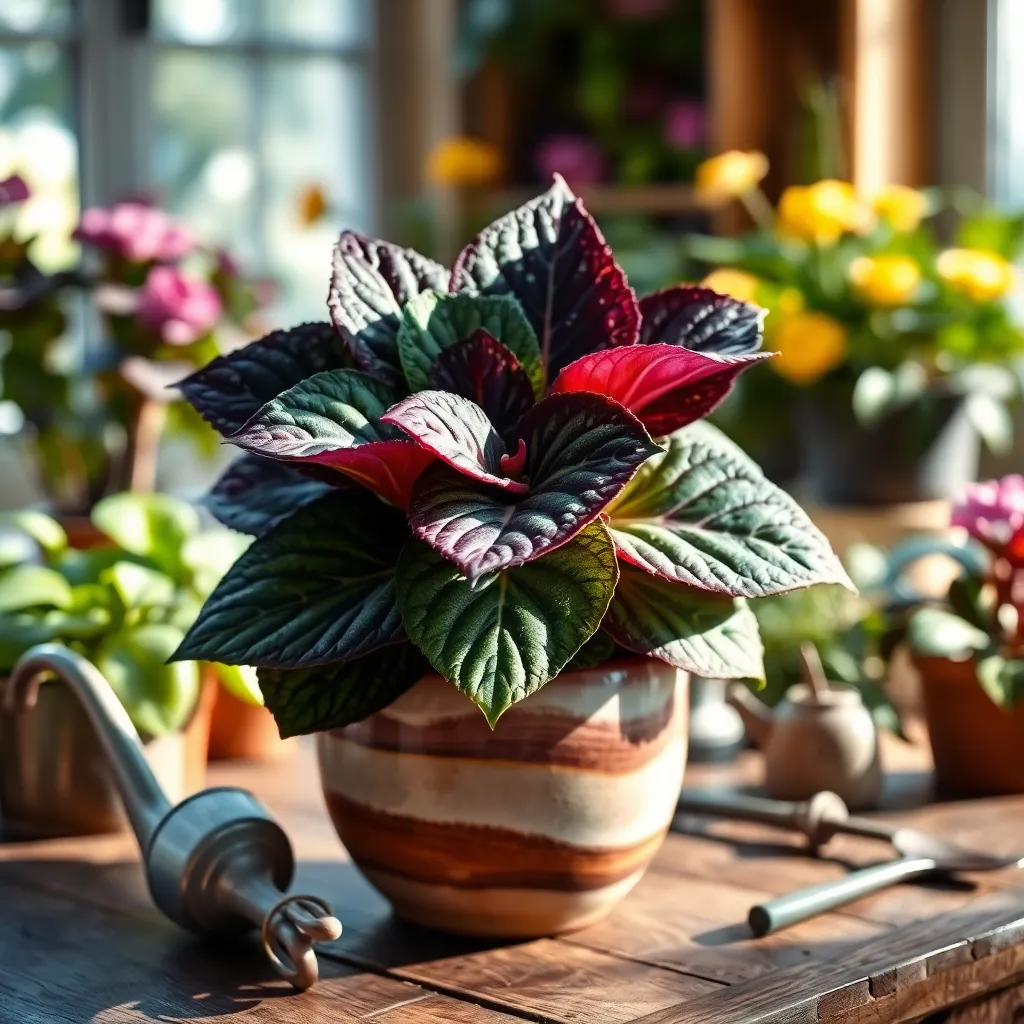
For a splash of color and texture in any room, the Begonia (Begonia rex-cultorum) is a fantastic choice. Known for their vibrant foliage, these plants can brighten up any indoor space with minimal effort.
Begonias thrive in bright, indirect light, making them perfect for rooms with filtered sunlight. It’s essential to keep them out of direct sun, which can scorch their delicate leaves.
For the best results, use a well-draining potting mix rich in organic matter. A peat-based soil with added perlite ensures proper aeration and prevents root rot.
Watering is crucial for Begonia care; let the top inch of soil dry out between waterings to avoid overwatering. During the growing season, feed your Begonia with a balanced liquid fertilizer every two to four weeks to encourage lush growth.
Jasmine (Jasminum polyanthum)

Jasmine (Jasminum polyanthum) is a delightful choice for indoor gardeners looking to add a touch of elegance to their living spaces. Known for its fragrant white blooms, this vine-like plant thrives in bright, indirect light, making it ideal for a sunny windowsill.
To keep your Jasmine healthy, ensure it is planted in a well-draining potting mix and watered regularly, allowing the top inch of soil to dry out between waterings. Avoid overwatering, as Jasmine prefers slightly dry conditions to prevent root rot, particularly in winter when growth slows.
In addition to basic care, regular pruning will encourage bushier growth and more blooms. Snip off spent flowers and trim back unruly stems to maintain a tidy shape and promote new growth.
For those seeking a more advanced challenge, consider training Jasmine on a trellis or hoop. This not only supports the plant’s natural climbing habit but also enhances its visual appeal as a decorative focal point in your home.
Hibiscus (Hibiscus rosa-sinensis)

The Hibiscus (Hibiscus rosa-sinensis), known for its large, vibrant blooms, can be a stunning addition to any indoor space. While it thrives in outdoor gardens, it can also flourish indoors with the right care and environment.
To ensure your hibiscus blooms beautifully indoors, provide it with plenty of bright, indirect sunlight. Position it near a south-facing window, and rotate the pot occasionally to maintain even growth.
Watering is crucial for hibiscus health; the soil should remain consistently moist but not waterlogged. Water the plant when the top inch of soil feels dry, and ensure your pot has suitable drainage to prevent root rot.
For optimal growth, plant your hibiscus in a well-draining soil mix, such as one containing perlite and peat moss. During the growing season, from spring to early fall, fertilize every two weeks with a balanced, water-soluble fertilizer to promote vigorous blooming.
Geranium (Pelargonium spp.)
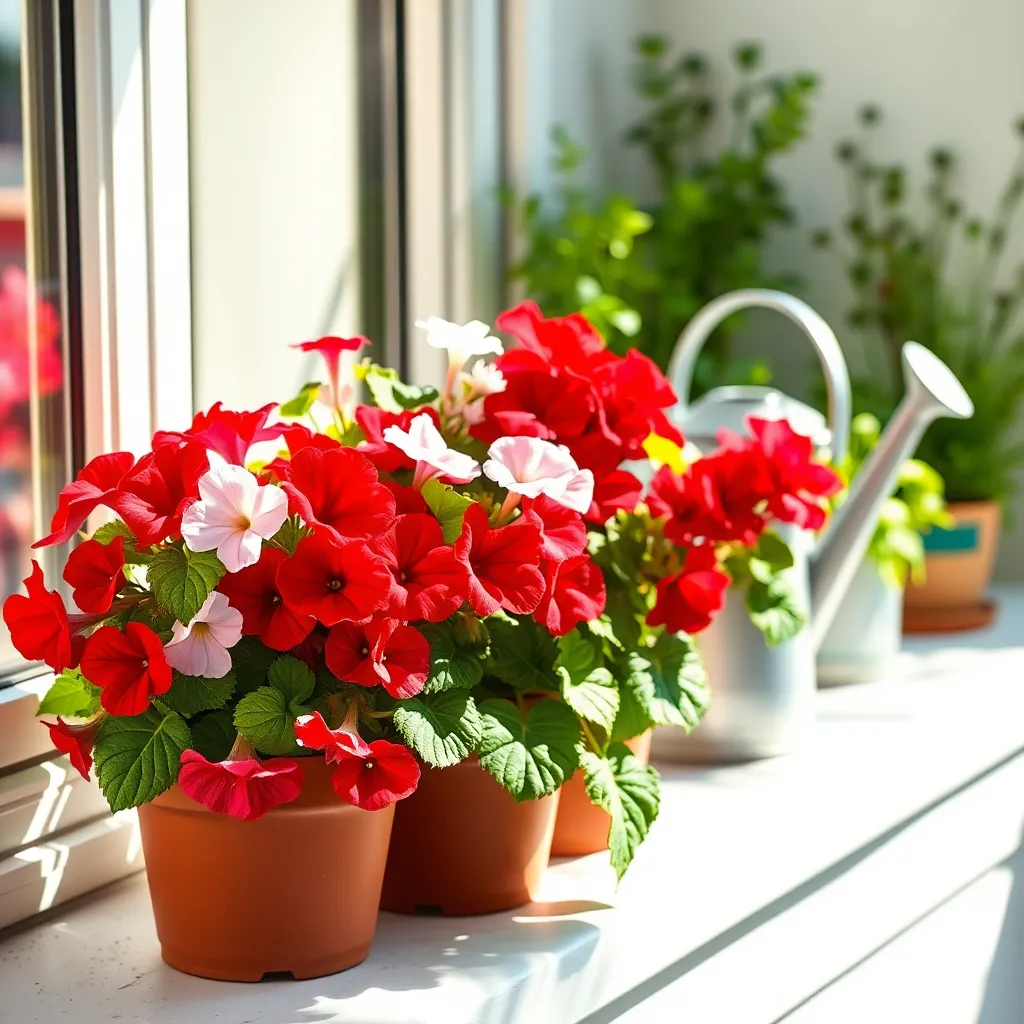
Geraniums, known scientifically as Pelargonium spp., are versatile flowering houseplants that offer vibrant blooms and lush foliage. These plants thrive in bright, indirect light, making them ideal for most indoor spaces where they can receive at least six hours of light daily.
When it comes to soil, geraniums prefer a well-draining mixture; a combination of potting soil and perlite works well to prevent root rot. To maintain optimal health, water them thoroughly but allow the top inch of soil to dry out between waterings, which typically means watering once every week or two depending on humidity levels.
Fertilizing geraniums is straightforward: use a balanced, water-soluble fertilizer every four to six weeks during the growing season for continuous blooms. For advanced care, deadheading spent flowers and pruning leggy stems will encourage a bushier growth habit and more prolific flowering.
While geraniums are relatively low-maintenance, they benefit from good air circulation to prevent common issues like powdery mildew. If you’re looking to expand your collection, geraniums are easily propagated from stem cuttings, making them an excellent choice for gardeners wanting to multiply their success.
Conclusion: Growing Success with These Plants
In exploring the “Top 10 Flowering Houseplants for Any Room,” we’ve delved into the nurturing dynamics of relationships, drawing parallels between the care of vibrant houseplants and the cultivation of meaningful connections. We learned about the resilience of the Peace Lily, the adaptability of the African Violet, and the symbolic warmth of the Anthurium, each illustrating essential relationship principles like resilience, adaptability, and warmth. The fragrant Jasmine teaches us about bringing joy, while the low-maintenance Orchid underscores the value of patience. The Geranium reminds us of balance, the Begonia of thriving in diverse environments, and the Hibiscus of embracing passion. The Bromeliad shows us the beauty of uniqueness, and the flowering Kalanchoe, the importance of resilience and renewal.
As an immediate step, consider introducing a new plant into your shared space, using it as a catalyst for conversation and connection. Bookmark this resourceful article for ongoing inspiration and to revisit the parallels between plant care and relationship growth.
Remember, just as these plants brighten any room, nurturing these principles can illuminate your relationships. With intention and care, your bonds can flourish in harmony. Save this article and let it be a beacon for ongoing relationship success.

